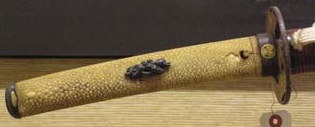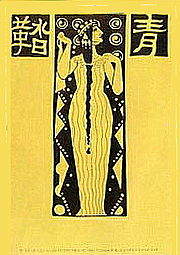Three weird kanjiJune 12, 2013 |
Home > Blog > Post 4< Previous Next > |
In the old layout of our webpage, we had a section called "Kanji of the day",
with a screenshot of a JiShop kanji entry, one of 31 randomly selected. Some user critisized us
for having selected too common characters known to everybody and suggested to consider a Weird
Kanji of the Day!
I liked the idea. When the time came to redesign the site, I decided to introduce such a section and made
a selection of weird characters. Unfortunately, the layout turned out to be overloaded and I gave
up this idea. But now we have a blog where I can show you some weird kanji from that selection
and explain why I find them fascinating.
蔕 [heta] Calyx
You have to be a botanist to know what calyx is. It is the outermost part of a flower, a ring of leaf-like green sepals, protecting the flower while it grows. However, calyx as such is called "gaku" in Japanese, being written with kanji 萼. It is not "heta" yet. "Heta" is a calyx that stays on a picked fruit like a persimmon, tomato or eggplant. We all are well familiar with this little thing, so annoying when you need to chop a tomato or peel a persimmon. But we don't have a word for it! In English, we need to give a long, wordy translation. While in Japanese they have a special word for this useless miserable thing, and not only a word, they have an entire kanji! Isn't it beautiful? |
 |
鰄 [kairagi] Skin from the back of a ray
Kanji under the key radical 魚 "fish" can denote not only different fish species but also their body parts: 鰭 "fin", 鱗 "scales", 鰾 "swim bladder". However, 鰄 specifies a particular body part of just one fish, porcupine ray, Urogymnus asperrimus, a very rare species, not found near Japan. How could this happen? |
 |
The answer is simple. Porcupine ray skin has a very rough but beatiful texture: white spots similar to plum blossoms. This made it the best material for covering sword grips. It would never slip from a warrior's hand during a battle and could also be an object of aesthetical appreciation. Of course, such an important thing couldn't stay without a special kanji!

鞜 Blue stocking
OK, the kanji itself means not "blue stocking" but "footware". However, the only Japanese word
that uses this kanji is 青鞜 [seito:], "Blue stocking". It refers to Blue Stockings Society in 18th-century England that united intellectual women with literary talents, and also the Japanese
feministic magazine published in 1911-1916. |
 |
Vadim Smolensky